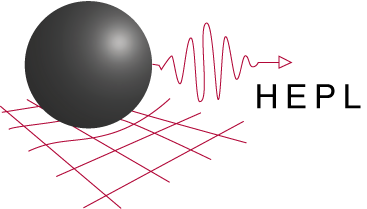News & Events
HEPL-KIPAC Experimental Seminars
Wednesday, March 31, 2010
Sigrid Close
Assistant Professor of Aeronautics and Astronautics
Stanford
From Dust to Asteroids: Impacts on Earth
Abstract: Since time began, impacts in our solar system have helped to define the evolution of our environment and in particular, life on Earth. In this presentation, we describe research on objects ranging in size from dust to large asteroids and comets with the goal of deriving fundamental properties about the parent object. These properties can then be used in order to mitigate future catastrophic impact events. In particular, we will discuss ground-based radar observations and modeling of dust plasma in order to understand how these particles interact with Earth's atmosphere and cause failures in spacecraft. We will also describe how ground-based data and modeling efforts are used to characterize larger objects, such as asteroids and comets, to derive composition and spin state. These preliminary results show that the number of binary and fragmenting objects is much higher than previously thought, and that the bulk densities have a broader distribution than what has been modeled. Both of these findings point to the difficulty in establishing a mitigation mission, should we determine that a large object had a high probability of impacting Earth. Finally, we present controversial evidence that a fraction (~4%) of the smallest particles appear to originate outside of our solar system and may be tied to pulsar ejecta.
Bio: Sigrid Close has joined the Aero/Astro faculty, as of January, 2010. Dr. Close has been a project leader at the Los Alamos National Laboratories in New Mexico , working on three projects focused on satellite systems and space situational awareness. Her research portfolio includes broadband tuned radio frequency (TRF) systems on GPS for the detection of ground-based situational awareness, the development of nonlinear algorithms for space-based ionospheric-removal, and the design of the first RF system for the detection of electromagnetic pulses generated by particles impacting spacecraft. Prior to her career at Los Alamos , she was on the technical staff of the Lincoln Laboratory at M.I.T.
Dr. Close received her Ph.D. in Astronomy (Space Physics) from Boston University , her M.A. in Physics from the University of Texas at Austin , and a B.S. in Physics and Astronomy from the University of Rochester(NY).
Time: 4:00pm – 5:30pm
Location: Physics and Astrophysics Conference Room 102/103
Light refreshments available 4:00pm; Presentation begins 4:15pm.
Open to All


